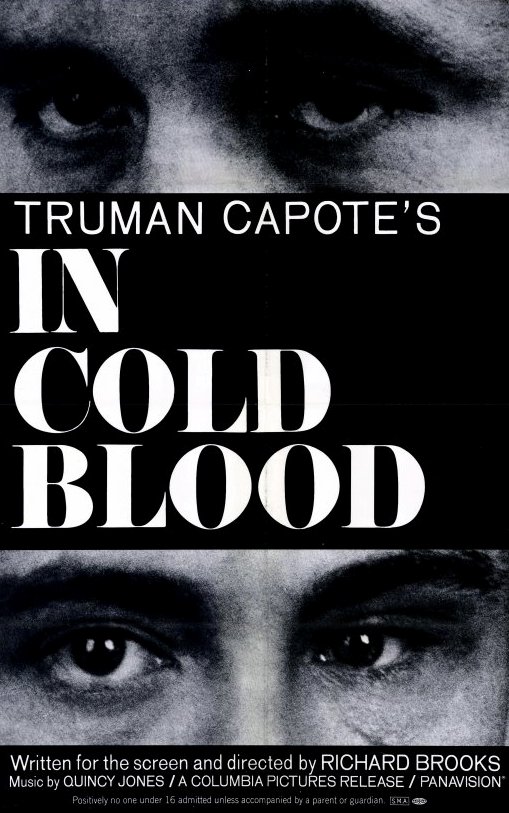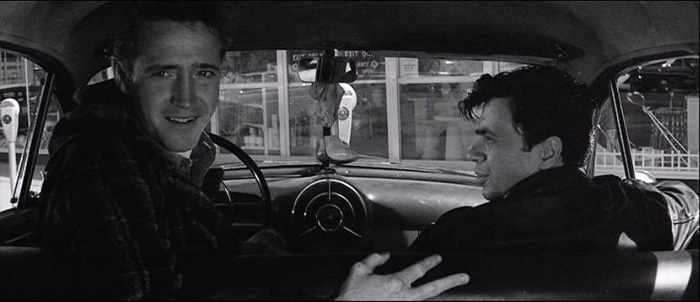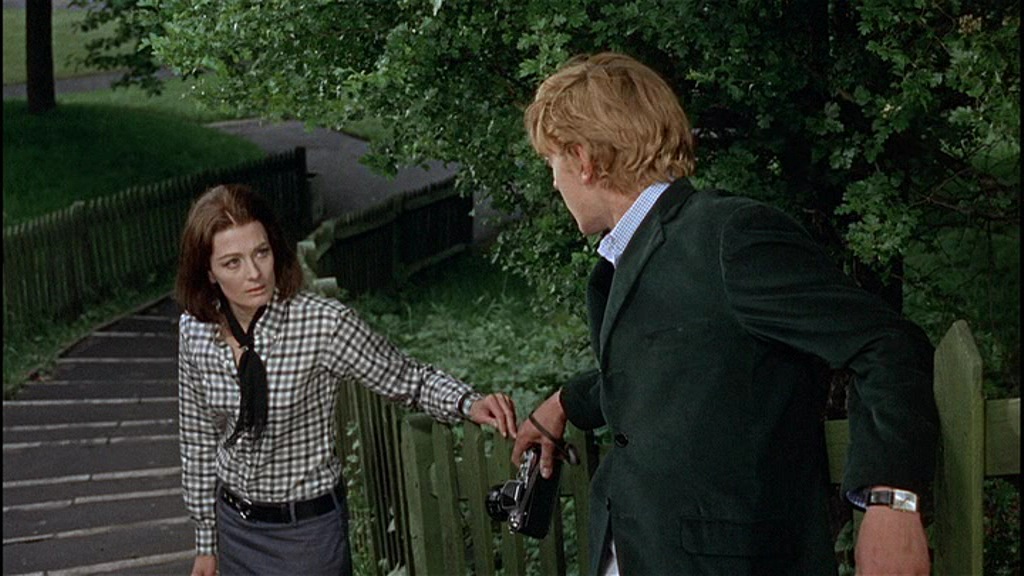
Holcomb, Kan., Nov. 15 [1959] (UPI) -- A wealthy wheat farmer, his wife and their two young children were found shot to death today in their home. They had been killed by shotgun blasts at close range after being bound and gagged ... There were no signs of a struggle, and nothing had been stolen. The telephone lines had been cut.
This 300-word article interested Capote enough for him to travel to Kansas to investigate the murders. This also got me interested in the film and history of this true event. At one point, this film and book were one of my favorite films. It still is a top favorite of mine because of the true story and the story about the two killers. The classic black and white of the film gives a better detail and the wonderful Conrad Hall chromatography adds a great and unique balance of this riveting tale. It is a film that also shaped the decade of the sixties for film.

Perry Smith and Dick Hickock concoct a plan to invade the home of the Clutter family, as Mr. Clutter supposedly keeps a large supply of cash on-hand in a safe. While the two criminals felt that their plan for the robbery was sound, it quickly unravels, resulting in the murder of Mr. and Mrs. Clutter, as well as two of their teenage children. The bodies of the Clutter family are discovered the next day, and a police investigation is immediately launched.
As the investigation builds, the two wanted men continue to elude law enforcement but are eventually arrested. The police interrogate the two men and confront them with evidence, such as a bloody footprint matching the boots worn by one of the men ("You boys signed your own work!"), but are slowed by Smith's refusal to provide answers. The police claim that another mistake made by the men is that they left a witness. Finally, Hickock confesses and states that he does not want to be executed for the crime.

This film was seen once by myself on TV and from that point on I fell in love with the way the film was done. It was a film that turn my head to understand how film was made too. I saw that same documentary that I saw Days of Heaven, and knew right away that this is what I wanted to do. This film struck me in an odd way. I saw the film and read the book and was really taken by the historical study of this story. It was odd but this film turned out to be one of my favorites for a long time. It still is a film I can watch over and over again and also easily put it in my top twenty films.
I think what also caught my eye with this film was the way the film was made. It could have never been made now (there was a made for TV version) and it could not be a film that was made in color too. It was a film that took a great gamble and put two somewhat unknowns in it and really gave me and the people the sense of these two killers. Nowadays, this film would be talked about and the story line would have been so over played that it's real themes would be lost. Brooks handles a flawless production, mixing gritty docudrama with Hollywood style. The movie is just on the edge of the Hollywood revolution: there's some nudity and a surprising amount of cussing, but the violence remains mostly off-screen.

In Cold Blood pulls a neat trick in humanizing the killers without making them particularly sympathetic. Our protagonists are the anti-Leopold and Loeb: too stupid to know what they're doing, their "perfect crime" goes horribly wrong from the word go, degenerating into senseless killing and immediate regret. These losers don't even have the wit to escape, fleeing to Mexico then drifting back to the scene of the crime. The moments of humanity they get - Perry's warped fantasies and flashbacks, Dewey's interviews with their parents, the amusing scene where Hickock and Smith help a vagrant kid collect soda bottles - only accentuate their crime's nastiness. Individually they'd be cagey but harmless hoods, but together they're the perfect storm of neurotic destruction.
The movie is a classic and strong suggestion is that you watch it. It is a tough movie to watch because you see these two killers exposed so well that you kinda mumble under your breath at all the times they make a mistake. There are reasons I love film and this is a wonderful page two story that stuck with Truman Capote and myself for many years. It is a classic and I think you might enjoy this. Enjoy and watch with intent and I am sure you will catch all the film stuff I love in this one film! Enjoy!!



